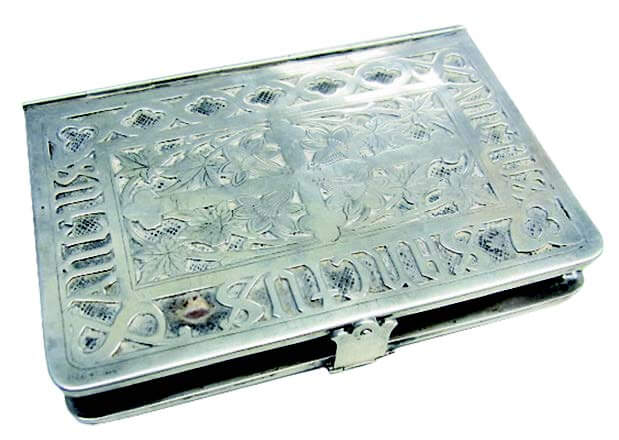Photographic images come in many forms: daguerreotype, ambrotype and tintype, or ferrotype. It takes an expert to know the difference. Daguerreotype was introduced in 1839. Made of polished silver, these photos are very reflective and heavy, and require a protective glass covering, as they are easily damaged.
This method was in use only from the early 1840s to late 1850s. Ambrotype — also called wet-collodion positive — was commonly used from 1854 to 1865. These glass images are technically negatives, but they appear positive when placed in front of a dark background. They were often hand-colored.
A Family's Glass Covering Photos
In the 1860s and 1870s, ferrotype (tintype) became popular. Inexpensive and easy to make, ferrotype images are made with a thin sheet of iron coated with black enamel. Ferrotype was used for a broad variety of subjects, whereas earlier processes were used almost solely for portraits. Most old, simple family photos are worth only a little, but outdoor, military and occupational scenes could be worth hundreds to thousands of dollars.


1864 A. JOHNSON AMBROTYPE 1864 ABRAHAM LINCOLN FERROTYPE
We received $1,000 for this rare small Lincoln/Johnson campaign button for a local jeweler who asked us to identify it. In poor condition it would be worth $300, and in immaculate condition $3,000; this one was in average condition.
This is an archival article formerly written and is for informational purposes only. The valuations in this article have likely changed since it was first written.




